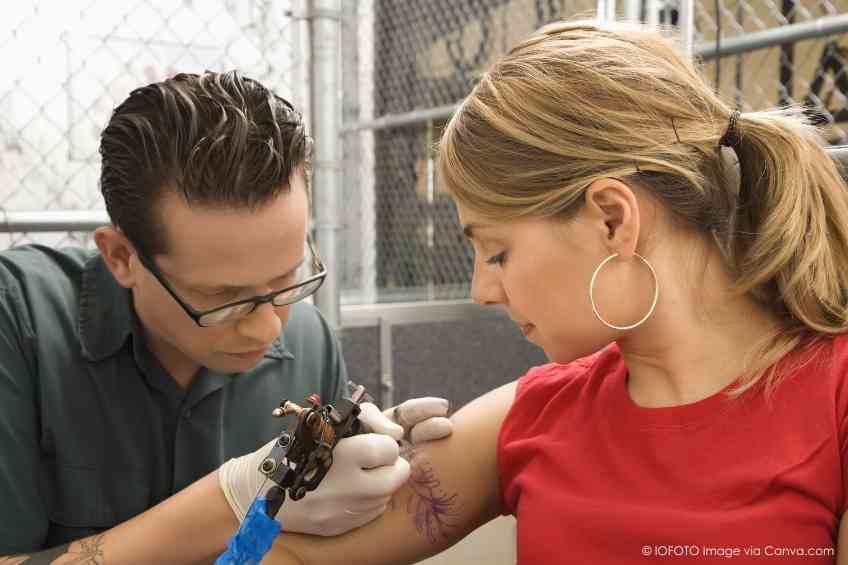By Sean Zucker –
Gone are the days of tattoos raising eyebrows or having no place in the American office. Today, the sight of ink on professionals from teachers to doctors is far from unusual. But while body art has become increasingly acceptable from a social standpoint, researchers are discovering troubling health risks associated with tattoo ink. Specifically, a new study warns that many of the materials used in the tattooing process contain hidden ingredients linked to cancer and organ damage.
Researchers at Binghamton University made this claim after examining the contents of standard tattoo ink used for any possible harmful ingredients. They also compared their findings with the ingredients presented on the brand labels to determine if these listings were accurate. They ultimately analyzed six ink color variations from nine different manufacturers in the United States, which included products from global companies to smaller producers.
This investigation amounted to 54 inks being examined. Alarmingly, 45 of them–over 90 percent–were found to include significant discrepancies between the contents listed on the label and what they actually contained.
The university’s team was quick to note the problems rested with the ink producers and not the tattoo artists.
“Our goal in a lot of this research is to empower artists and their clients. Tattoo artists are serious professionals who have dedicated their lives to this craft and they want the best possible outcomes for their clients,” lead author and Assistant Professor of Chemistry John Swierk reported. “We’re trying to highlight that there are some deficiencies in manufacturing and labeling.”
Many of the ink disparities involved different pigments than the ones listed on labels or entirely unannounced additives, the study noted. Unfortunately, many of these unlisted additions can be quite harmful. For example, over half of the 54 inks contained polyethylene glycol which can cause organ damage through repeated exposure, per the researchers. Beyond this, 15 inks were found to have propylene glycol, a potential allergen. Other inks included additional contaminants such as 2-phenoxyethanol, a known health threat to nursing infants, and an antibiotic often used to treat urinary tract infections.
“We’re hoping the manufacturers take this as an opportunity to reevaluate their processes and that artists and clients take this as an opportunity to push for better labeling and manufacturing,” Swierk added.
The study’s findings could not clearly determine whether these unlisted ingredients were intentionally added or were along the manufacturing process where the errors stemmed. Regardless, Swierk hopes for more transparency and attention to be given to tattoo ink labels going forward.
“The FDA is still figuring out what that is going to look like and we think this study will influence the discussions around MoCRA,” Swierk said referring to the Modernization of Cosmetics Regulation Act of 2022. “This is also the first study to explicitly look at inks sold in the United States and is probably the most comprehensive because it looks at the pigments, which nominally stay in the skin, and the carrier package, which is what the pigment is suspended in.”
Binghamton’s work is not meant to discourage folks from the inking chair. A growing number of people have already embraced the practice for a variety of reasons. The Pew Research Center, in fact, reports that 32 percent of Americans have at least one tattoo, while 22 percent sport multiple pieces of body art.
The research center added that 69 percent of inked adults reported getting a tattoo to honor or remember someone. Almost 50 percent report their art was meant to make a statement about something they believed in. Close to a third also claimed to decorate their bodies out of pure vanity and to improve their appearance.
All of this raises the same question often posed to those with a proclivity for tanning beds: is it really worth the risk of cancer?













